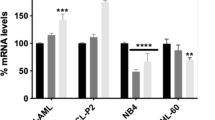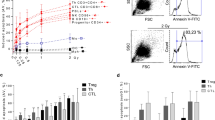Abstract
There is increasing evidence to indicate that O6-methyldeoxyguanosine (O6-MedG) formation in DNA is a critical cytotoxic event following exposure to certain anti-tumour alkylating agents and that the DNA repair protein O6-alkylguanine-DNA alkyltransferase (ATase) can confer resistance to these agents. We recently demonstrated a wide inter-individual variation in the depletion and subsequent regeneration of ATase in human peripheral blood lymphocytes following sequential DTIC (400 mg m-2) and fotemustine (100 mg m-2) treatment, with the nadir ATase activity occurring approximately 4 h after DTIC administration. We have now measured the formation and loss of O6-methyldeoxyguanosine (O6-MedG) in the DNA of peripheral leucocytes of eight patients receiving this treatment regimen. O6-MedG could be detected within 1 h and maximal levels occurred approximately 3-5 h after DTIC administration. Following the first treatment cycle, considerable inter-individual variation was observed in the peak O6-MedG levels, with values ranging from 0.71 to 14.3 mumol of O6-MedG per mol of dG (6.41 +/- 5.53, mean +/- s.d.). Inter- and intra-individual variation in the extent of O6-MedG formation was also seen in patients receiving additional treatment cycles. This may be a consequence of inter-patient differences in the capacity for metabolism of DTIC to release a methylating intermediate and could be one of the determinants of clinical response. Both the pretreatment ATase levels and the extent of ATase depletion were inversely correlated with the amount of O6-MedG formed in leucocyte DNA when expressed either as peak levels (r = -0.59 and -0.75 respectively) or as the area under the concentration-time curve (r = -0.72 and -0.73 respectively). One complete and one partial clinical response were seen, and these occurred in the two patients with the highest O6-MedG levels in the peripheral leucocyte DNA, although the true significance of this observation has yet to be established.
This is a preview of subscription content, access via your institution
Access options
Subscribe to this journal
Receive 24 print issues and online access
$259.00 per year
only $10.79 per issue
Buy this article
- Purchase on Springer Link
- Instant access to full article PDF
Prices may be subject to local taxes which are calculated during checkout
Similar content being viewed by others
Author information
Authors and Affiliations
Rights and permissions
About this article
Cite this article
Lee, S., Margison, G., Thatcher, N. et al. Formation and loss of O6-methyldeoxyguanosine in human leucocyte DNA following sequential DTIC and fotemustine chemotherapy. Br J Cancer 69, 853–857 (1994). https://doi.org/10.1038/bjc.1994.165
Issue Date:
DOI: https://doi.org/10.1038/bjc.1994.165
This article is cited by
-
Complete regression and systemic protective immune responses obtained in B16 melanomas after treatment with LTX-315
Cancer Immunology, Immunotherapy (2014)
-
High activity of sequential low dose chemo-modulating Temozolomide in combination with Fotemustine in metastatic melanoma. A feasibility study
Journal of Translational Medicine (2010)



